 W
WThe Second Sino-Japanese War (1937–1945) was a military conflict that was primarily waged between the Republic of China and the Empire of Japan. The war made up the Chinese theater of the wider Pacific Theater of the Second World War. The beginning of the war is conventionally dated to the Marco Polo Bridge Incident on 7 July 1937, when a dispute between Japanese and Chinese troops in Peking escalated into a full-scale invasion. This full-scale war between the Chinese and the Empire of Japan is often regarded as the beginning of World War II in Asia. In 2017 the Ministry of Education in the People's Republic of China decreed that the term "eight-year war" in all textbooks should be replaced by "fourteen-year war", with a revised starting date of 18 September 1931 provided by the Japanese invasion of Manchuria. According to historian Rana Mitter, historians in China are unhappy with the blanket revision, and the Republic of China did not consider itself to be continuously at war with Japan over these six years. The Tanggu Truce of 1933 officially ended the earlier hostilities in Manchuria while the He-Umezu Agreement of 1935 acknowledged the Japanese demands to put an end to all anti-Japanese organizations in China.
 W
WThe 2015 China Victory Day parade was a military parade held along Changan Avenue, Beijing, on 3 September 2015 to celebrate the 70th anniversary of Victory over Japan Day of World War II. The commemoration was the first high-profile military parade held to celebrate an occasion other than the National Day of the People's Republic of China. 12,000 troops of the People's Liberation Army participated in the parade, in addition to over 1,000 troops from 17 different countries, and about 850,000 "Citizen Guards" were mobilised to guard the city. Xi Jinping inspected the troops. Premier Li Keqiang was the master of ceremonies and Song Puxuan was the chief commander of the parade.
 W
WAlddreu Airfield also known as Cheju-do No. 2 (K-40) Air Base was a former Imperial Japanese Navy Air Service and United States Air Force (USAF) air base on southern Jeju Island. It was mostly returned to farm land from the late 1960s onwards, though the site is still owned and used to some extent by the Republic of Korea Air Force, in particular a grass airstrip known semi-officially as Alddreu Airport.
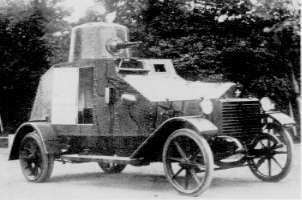 W
WThis is a list of armour used by the Imperial Japanese Army in the Second Sino-Japanese War.
 W
WThe army groups of the National Revolutionary Army were the largest conventional mobile formations in the organization of the army of the Republic of China during the Second Sino-Japanese War. The first army groups were established immediately after the Japanese attack at Marco Polo Bridge on 7 July 1937, and new army groups continued to be formed throughout the war.
 W
WBattle Hymn of China, by Agnes Smedley. Also published as China Correspondent. This book is a first-hand account of the Sino-Japanese War, from the viewpoint of a left-wing US woman who tried sharing the lives of ordinary Chinese.
 W
WThe third Battle of Changsha was the first major offensive in China by Imperial Japanese forces following the Japanese attack on the Western Allies.
 W
WBeijing Xijiao Airport is a military airport in Beijing, China. It was also used by charter flights. It is located in Haidian District, 19.75 miles (31.78 km) from Beijing Capital International Airport and about 8 miles (13 km) from the city centre. It has one runway numbered 18/36.
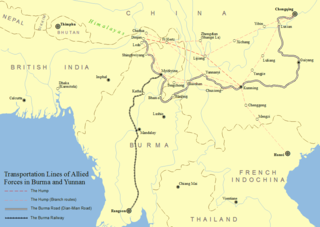 W
WThe Burma Road was a road linking Burma with southwest China. Its terminals were Kunming, Yunnan, and Lashio, Burma. It was built while Burma was a British colony to convey supplies to China during the Second Sino-Japanese War. Preventing the flow of supplies on the road helped motivate the occupation of Burma by the Empire of Japan in 1942. Use of the road was restored to the Allies in 1945 after the completion of the Ledo Road. Some parts of the old road are still visible today.
 W
WThe Canton Operation was part of a campaign by Japan during the Second Sino-Japanese War to blockade China to prevent it from communicating with the outside world and importing needed arms and materials. Control of Guangzhou (Canton) and the Pearl River Delta would provide a base to make the blockade of Guangdong province more effective by seizing southern China's major port and isolate the British port of British Hong Kong.
 W
WThe Changsha fire of 1938, also known as Wenxi fire, was the greatest human-caused citywide fire in Chinese history. Kuomintang officials ordered the city be set on fire in 1938 during the Second Sino-Japanese War to prevent the Japanese from benefiting from its capture. The result of this fire made Changsha one of the most damaged cities during World War II, alongside Stalingrad, Hiroshima, Nagasaki, Tokyo, Dresden and others.
 W
WThe Second Sino-Japanese War (1937–1945) was a military conflict that was primarily waged between the Republic of China and the Empire of Japan. The war made up the Chinese theater of the wider Pacific Theater of the Second World War. The beginning of the war is conventionally dated to the Marco Polo Bridge Incident on 7 July 1937, when a dispute between Japanese and Chinese troops in Peking escalated into a full-scale invasion. This full-scale war between the Chinese and the Empire of Japan is often regarded as the beginning of World War II in Asia. In 2017 the Ministry of Education in the People's Republic of China decreed that the term "eight-year war" in all textbooks should be replaced by "fourteen-year war", with a revised starting date of 18 September 1931 provided by the Japanese invasion of Manchuria. According to historian Rana Mitter, historians in China are unhappy with the blanket revision, and the Republic of China did not consider itself to be continuously at war with Japan over these six years. The Tanggu Truce of 1933 officially ended the earlier hostilities in Manchuria while the He-Umezu Agreement of 1935 acknowledged the Japanese demands to put an end to all anti-Japanese organizations in China.
 W
WThis China War Memorial Medal, also known as the Medal in Commemoration of Victory in the Resistance Against Aggression was authorized after the Second Sino-Japanese War by the Republic of China government for servicemen who assisted the Chinese Government fighting against the Japanese during the war. Members of the Fourteenth Air Force, the Flying Tigers, were eligible to be awarded this medal. The medal was created in 1944 and first distributed in 1946 to those who met the requirements from the Chinese Nationalist Government. Lt. General Claire Lee Chennault and Anna Chennault were a few who had received this medal.
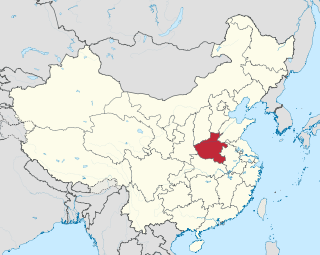 W
WThe Henan Famine of 1942–1943 occurred in Henan, most particularly within the eastern and central part of the province. The famine occurred within the context of the Second Sino-Japanese War and resulted from a combination of natural and human factors. 2 to 5 million people died of starvation or disease and upwards of 4 million fled Henan.
 W
WChinese Muslims in the Second Sino-Japanese War were courted by both Chinese and Japanese generals, but tended to fight against the Japanese, with or without the support of higher echelons of other Chinese factions. Japan attempted to reach out to ethnic minorities to rally to their side during the Second Sino-Japanese War, but only succeeded with Manchukuo and Mengjiang.
 W
WThe term Collaborationist Chinese Army refers to the military forces of the puppet governments founded by Imperial Japan in mainland China during the Second Sino-Japanese War and World War II. They include the armies of the Provisional (1937–1940), Reformed (1938–1940) and Reorganized National Governments of the Republic of China (1940–1945), which absorbed the former two regimes.
 W
WCommunist-controlled China, officially called the Soviet Zone from 1927 to 1937, and the Liberated Zone from 1946 to 1949, was the part of the territories of China controlled by the Communist Party of China from 1927 to 1949 during the Republican era and the Chinese Civil War with Nationalist China. There were six soviet areas from 1927 to 1933: the Ching-kang-shan, the Central Soviet in Eastern Jiangxi on the border of Fujian, the O-Yu-Wan (Hubei-Henan-Anhui) Soviet, Hsiang-o-hsi, and Hsiang-kan (Hunan-Kiangsi). The first soviet was the Hailufeng Soviet created in 1927. The Central Soviet was the main base of the Communist Party where Communist Party leader Mao Zedong issued a directive on 1 September 1931 for the Central Soviet to mass mobilize the region as a base area. As problems occurred over being able to control territories outside the Central Soviet, by 1933 a full transfer of Communist forces to the Central Soviet was achieved.
 W
WThe Republic of China Air Force (ROCAF) was officially formed by the Kuomintang (KMT) after the establishment of the Aviation Ministry in 1920. As tensions mounted between China and Imperial Japan in the 1930s, air units from the Chinese warlords, including those from the Guangdong Provincial Air Force, and overseas Chinese aviators, became integrated into the centralized command of the ROCAF, nominally as the Nationalist Air Force of China, and coordinating with the Second United Front to counter the Imperial Japanese invasion and occupation.
 W
WThe East Hebei Autonomous Government, also known as the East Ji Autonomous Government and the East Hebei Autonomous Anti-Communist Government, was a short-lived late-1930s state in northern China. It has been described by historians as either a Japanese puppet state or a buffer state.
 W
WThe term Free China, in the context of the Second Sino-Japanese War, refers to those areas of China not under the control of the Imperial Japanese Army or any of its puppet governments, such as Manchukuo, the Mengjiang government in Suiyuan and Chahar, or the Provisional Government of the Republic of China in Peiping. The term came into more frequent use after the Battle of Nanjing, when Chiang Kai-shek evacuated the government of the Republic of China to Chungking.
 W
WThe Great Way or Dadao Government, formally the Great Way Municipal Government of Shanghai, was a short-lived puppet government proclaimed in Pudong on December 5, 1937, to administer Japanese-occupied Shanghai in the early stages of the Second Sino-Japanese War.
 W
WThe Hainan Island Operation, or Kainan-tō sakusen (海南島作戦) in Japanese, was part of a campaign by the Empire of Japan during the Second Sino-Japanese War to blockade the Republic of China and prevent it from communicating with the outside world as well as to prevent imports of much-needed arms and materials.
 W
WHakkō ichiu or Hakkō iu was a Japanese political slogan meaning the divine right of the Empire of Japan to "unify the eight corners of the world". This slogan formed the basis of the Japanese Empire's ideology. It was prominent from the Second Sino-Japanese War to World War II, popularized in a speech by Prime Minister Fumimaro Konoe on January 8, 1940.
 W
WThe Hebei–Chahar Political Council, or Hebei-Chahar Political Commission, was established at Beijing under Gen. Song Zheyuan, on 18th December 1935.
 W
WThe Inner Mongolian Army, also sometimes called the Mengjiang National Army, referred to the Inner Mongolian military units in service of Imperial Japan and its puppet state of Mengjiang during the Second Sino-Japanese War, particularly those led by Prince Demchugdongrub. It was primarily a force of cavalry units, which mostly consisted of ethnic Mongols, with some Han Chinese infantry formations.
 W
WThe Japan–Manchukuo Protocol was signed on 15 September 1932, between Japan and the state of Manchukuo. The Treaty confirmed the recognition by Japan of the Manchukuo state, following the Japanese invasion of Manchuria in 1931, and the establishment of a Manchurian state on 1 March 1932. The treaty also defined a mutual defence agreement, allowing Japanese troops to station in Manchukuo, and thereby effectively occupy the country.
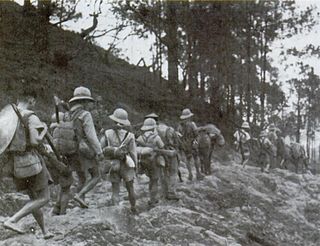 W
WThe Japanese coup d'état in French Indochina, known as Meigō Sakusen , was a Japanese operation that took place on 9 March 1945, towards the end of World War II. With Japanese forces losing the war and the threat of an Allied invasion of Indochina imminent, the Japanese were concerned about an uprising against them by French colonial forces.
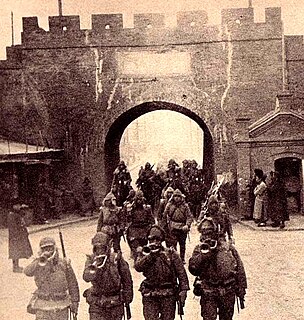 W
WThe Japanese invasion of Manchuria began on 18 September 1931, when the Kwantung Army of the Empire of Japan invaded Manchuria immediately following the Mukden Incident. At war’s end in February of 1932, the Japanese established the puppet state of Manchukuo. Their occupation lasted until the success of the Soviet Union and Mongolia with the Manchurian Strategic Offensive Operation in mid-August of 1945.
 W
WJapanese orphans in China consist primarily of children left behind by Japanese families following the Japanese repatriation from Huludao in the aftermath of World War II. According to Chinese government figures, roughly 2,800 Japanese children were left behind in China after the war, 90% in Inner Mongolia and northeast China. They were adopted by rural Chinese families.
 W
WThe Japanese People's Anti-war Alliance was a Japanese resistance organization in China during the Second Sino-Japanese War. It was disbanded by the nationalist government for fear that it had communist sympathies.
 W
WThe Kweilin incident occurred on August 24, 1938 when a Douglas DC-2 airliner carrying 18 passengers and crew was destroyed by Japanese aircraft in China. There were fourteen fatalities. It was the first civilian airliner in history to be shot down by hostile aircraft. The pilot was American and the crew and passengers Chinese. As it was unprecedented for a civilian aircraft to be attacked, there was international diplomatic outrage over the incident. In the United States, it helped solidify the popular view that Japan was morally wrong in their war against China, but the incident was not enough to spur the US into action against Japan despite Chinese entreaties. The Kweilin was re-built, and destroyed by the Japanese a second time two years later.
 W
WA Leaf in the Storm, a Novel of War-Swept China is a novel written in English by Lin Yutang, published in 1941 by John Day Company. Set in Beiping (Beijing) when it was controlled by the Japanese, the novel describes the years of the Second Sino-Japanese War before the American entrance in 1941. It is a sequel to Lin's Moment in Peking.
 W
WLin Wang was an Indian elephant that served with the Chinese Expeditionary Force during the Second Sino-Japanese War (1937–1945) and later relocated to Taiwan with the Kuomintang forces. Lin Wang lived out most of his life in the Taipei Zoo and unquestionably was the most popular and famous animal in Taiwan. Many adults and children alike affectionately called the bull elephant "Grandpa Lin Wang."
 W
WManchukuo, officially the State of Manchuria prior to 1934 and the Empire of Manchuria after 1934, was a puppet state of the Empire of Japan in Northeast China and Inner Mongolia from 1932 until 1945. It was founded as a republic in 1932 after the Japanese invasion of Manchuria, and in 1934 it became a constitutional monarchy. Under the de facto control of Japan, it had limited international recognition.
 W
WThe Manchukuo Imperial Army was the ground force of the military of the Empire of Manchukuo, a puppet state established by Imperial Japan in Manchuria, a region of northeastern China. The force was primarily used for fighting against Communist and Nationalist guerrillas in Manchukuo but also took part in battle against the Soviet Red Army on several occasions. It initially consisted of former National Revolutionary Army troops of the "Young Marshal" Zhang Xueliang who were recruited after the Japanese invasion of Manchuria en masse, but eventually expanded to include new volunteers and conscripts. The Imperial Army increased in size from about 111,000 troops in 1933 to an estimated strength of between 170,000 and 220,000 soldiers at its peak in 1945, being composed of Han Chinese, Manchus, Mongols, Koreans, Japanese, and White Russians. Throughout its existence the majority of its troops were considered to be mostly unreliable by their Japanese officers and advisers, due to poor training, equipment, and morale.
 W
WNanchang Laoyingfang Airport was a military air base and the first airport in Nanchang, the capital of Jiangxi Province, China. Constructed in 1929, it was one of the four major air bases of the Republic of China Air Force in the 1930s. Laoyingfang was closed after 1949 and its site has been redeveloped for use by the Jiangxi Provincial Government and Jiangxi Normal University.
 W
WNanchang Qingyunpu Airport, also known as Sanjiadian Airport, is an airport in Qingyunpu District of Nanchang, Jiangxi, China. Originally constructed for use by the Republic of China Air Force, it was the largest airport in China when opened in 1935. The airport was destroyed during the Second Sino-Japanese War and rebuilt afterwards. After 1949, it was mainly used for test flights by the aircraft manufacturer Hongdu Aviation Industry Group, until its replacement by Nanchang Yaohu Airport in 2018.
 W
WThe Nationalist government, officially the National Government of the Republic of China, also known as Second Republic of China but most commonly known simply as the Republic of China, refers to the government of the Republic of China between 1 July 1925 and 20 May 1948, led by the Kuomintang. The name derives from the Kuomintang's translated name "Nationalist Party".
 W
WThe Nine-Power Treaty Conference or Brussels Conference was convened in late October 1937 as a meeting for the signatories of the Nine Power Treaty to consider "peaceable means" for hastening the end of the renewed conflict between China and Japan, that had broken out in July. This Conference was held in accordance with a provision of the Nine-Power Treaty of 1922. The actual conference was held in Brussels, Belgium, from November 3 to 24, 1937.
 W
WTsunekazu Nishioka was a highly respected miyadaiku (宮大工), a temple and shrine carpenter, and the Tōryō of Japanese Buddhist temple and Shinto shrine buildings. He was a stern teacher, and was given the nickname of oni, for the strictness of his words of guidance to colleagues and apprentices. Nishioka continued the ancient practices of construction and restoration used for historical temple buildings, and contributed to preserving the oldest existing wooden structures in the world. He devoted his life to the repair and restoration of the Buddhist temple buildings at Hōryū-ji, and the restoration of Yakushi-ji, and numerous other temples and pagodas in the region of modern-day Nara Prefecture.
 W
WThe Northeastern Army, was the Chinese army of the Fengtien clique until the unification of China in 1928. From 1931 to 1933 it faced the Japanese forces in northeast China, Jehol and Hebei, in the early years of the Second Sino-Japanese War.
 W
WOperation Chahar, known in Chinese as the Nankou Campaign, occurred in August 1937, following the Battle of Beiping-Tianjin at the beginning of Second Sino-Japanese War.
 W
WThe USS Panay incident on December 12, 1937, was a Japanese bombing attack on the U.S. Navy river gunboat Panay and three Standard Oil Company tankers on the Yangtze River. They strafed survivors in the water. The boats were rescuing U.S. and Chinese civilians fleeing from Japanese invaders attacking Nanking, China. Japan and the United States were not at war at the time. Public outrage was loud in the U.S., but both sides were conciliatory and quickly settled the dispute. The Japanese claimed that they did not see the U.S. flags painted on the deck of the gunboat. Tokyo officially apologized, and paid a cash indemnity. The settlement mollified some of the U.S. anger, and newspapers called the matter closed.
 W
W{|class="infobox" style="width:25.5em;border-spacing:2px;"
 W
WThe Provisional Government of the Republic of China was a Chinese puppet state of the Empire of Japan that existed from 1937 to 1940 during the Second Sino-Japanese War. It had been formed largely on the initiative of Imperial Japanese Army commanders in north China, before securing approval from Japanese government authorities in Tokyo. Thus the Provisional Government had nominal authority in Japanese occupied zones in north China, while to the south the Central China Expeditionary Army established the Reformed Government of the Republic of China in 1938, which had authority in the Yangtze River area. Both essentially served as a local organ of the Japanese military authorities, due to the presence and extensive powers of Japanese advisors within the Provisional Government over native Chinese bureaucrats, and because it never made any attempt to secure international recognition, even from Japan.
 W
WPut Down Your Whip, also translated as Lay Down Your Whip, is a 1931 Chinese street play written by Chen Liting during the Republican era, who drew inspiration from the earlier play Meiniang by Tian Han.
 W
WThe Reformed Government of the Republic of China was a Chinese puppet state created by Japan that existed from 1938 to 1940 during the Second Sino-Japanese War. The regime had little authority or popular support, nor did it receive international recognition even from Japan itself, lasting only two years before it was merged with the Provisional Government into the Reorganized National Government of the Republic of China under Wang Jingwei. Due to the extensive powers of the Japanese advisors within the government and its own limited powers, the Reformed Government was not much more than an arm of the Japanese military administration.
 W
WThe Second United Front was the alliance between the Chinese Nationalist Party and the Chinese Communist Party (CCP) to resist the Japanese invasion during the Second Sino-Japanese War, which suspended the Chinese Civil War from 1937 to 1941.
 W
WJapan had an official slave system from the Yamato period until Toyotomi Hideyoshi abolished it in 1590. Afterwards, the Japanese government facilitated the use of "comfort women" as sex slaves from 1932 – 1945. Prisoners of war captured by the Japanese were also used as slaves during the Second World War.
 W
WThe Taihoku Air Raid that took place on 31 May 1945 was the largest Allied air raid on the city of Taihoku during World War II. Many residents were killed in the raid and tens of thousands wounded or displaced.
 W
WThe Tanggu Truce, sometimes called the Tangku Truce , was a ceasefire that was signed between the Republic of China and the Empire of Japan in Tanggu District, Tianjin, on May 31, 1933. It formally ended the Japanese invasion of Manchuria, which had begun in 1931.
 W
WThe Tientsin incident (天津事件) was an international incident created by a blockade by the Imperial Japanese Army's Japanese Northern China Area Army of the British settlements in the north China treaty port of Tientsin in June 1939. Originating as a minor administrative dispute, it escalated into a major diplomatic incident.
 W
WThe Tientsin incident of 1931 was the operation planned by the Kwantung Army of the Empire of Japan to place Puyi on the throne of the Japanese-controlled Manchuria. The plan, orchestrated by Colonel Kenji Doihara and Colonel Itagaki Seishiro was successful, and Puyi became the Chief Executive of Manchukuo the following year. Puyi was subsequently enthroned as the Kangde Emperor in 1934.
 W
WUnit 516 (第五一六部隊) was a top secret Japanese chemical weapons facility, operated by the Kempeitai, in Qiqihar, Japanese-occupied northeast China. The name Unit 516 was a code name (Tsūshōgō) of the Unit. It was officially called the Kwantung Army Chemical Weapons Section and operated underneath Unit 731.
 W
WUnit 731 , short for Manshu Detachment 731 and also known as Kamo Detachment, and Ishii Unit, was a covert biological and chemical warfare research and development unit of the Imperial Japanese Army that undertook lethal human experimentation during the Second Sino-Japanese War (1937–1945) of World War II. It was responsible for some of the most notorious war crimes carried out by Imperial Japan. Unit 731 was based at the Pingfang district of Harbin, the largest city in the Japanese puppet state of Manchukuo, and had active branch offices throughout China and Southeast Asia.
 W
WUnit 8604, also known as Detachment 8604, Detachment Nami or Detachment Nami 8604, was the Epidemic Prevention and Water Purification Department unit of the Japanese Southern China Area Army. It allegedly secretly researched biological warfare and other topics through human experimentation during the Second Sino-Japanese War (1937–1945) and World War II era. It was formed in Guangzhou in 1939, and headquartered at Sun Yat-sen University of Medical Sciences.
 W
WThe Wang Jingwei regime is the common name of the Reorganized National Government of the Republic of China, the government of the puppet state of the Empire of Japan in eastern China called simply the Republic of China. This should not be confused with the contemporaneously existing National Government of the Republic of China under Chiang Kai-shek, which was fighting with the Allies of World War II against Japan during this period. The country was ruled as a one-party republic under Wang Jingwei, a very high-ranking former Kuomintang (KMT) official. The region that it would administer was initially seized by Japan throughout the late 1930s with the beginning of the Second Sino-Japanese War. Wang, a rival of Chiang Kai-shek and member of the pro-peace faction of the KMT, defected to the Japanese side and formed a collaborationist government in occupied Nanking (Nanjing) in 1940. The new state claimed the entirety of China during its existence, portraying itself as the legitimate inheritors of the Xinhai Revolution and Sun Yat-sen's legacy as opposed to Chiang Kai-shek's government in Chunking (Chongqing), but effectively only Japanese-occupied territory was under its direct control. Its international recognition was limited to other members of the Anti-Comintern Pact, of which it was a signatory. The Reorganized National Government existed until the end of World War II and the surrender of Japan in August 1945, at which point the regime was dissolved and many of its leading members were executed for treason.
 W
WX Force was the name given to the portion of the National Revolutionary Army's Chinese Expeditionary Force that retreated from Burma into India in 1942. Chiang Kai-shek sent troops into Burma from Yunnan in 1942 to assist the British in holding back the Japanese. These Chinese forces became broken up, and in the retreat out of Burma part of these forces entered India. These were cantoned at Ramgarh Cantonment in the Bihar Province, brought up to five-Division strength, and re-equipped and re-trained by American instructors at British expense.
 W
WThe 1938 Yellow River flood was a flood created by the Nationalist Government in central China during the early stage of the Second Sino-Japanese War in an attempt to halt the rapid advance of Japanese forces. It has been called the "largest act of environmental warfare in history" and an example of Scorched earth military strategy.
 W
WThe Yellow Sand Society, also known as Yellow Way Society, and Yellow Gate Society, was a rural secret society and folk religious sect in northern China during the 19th and 20th century.